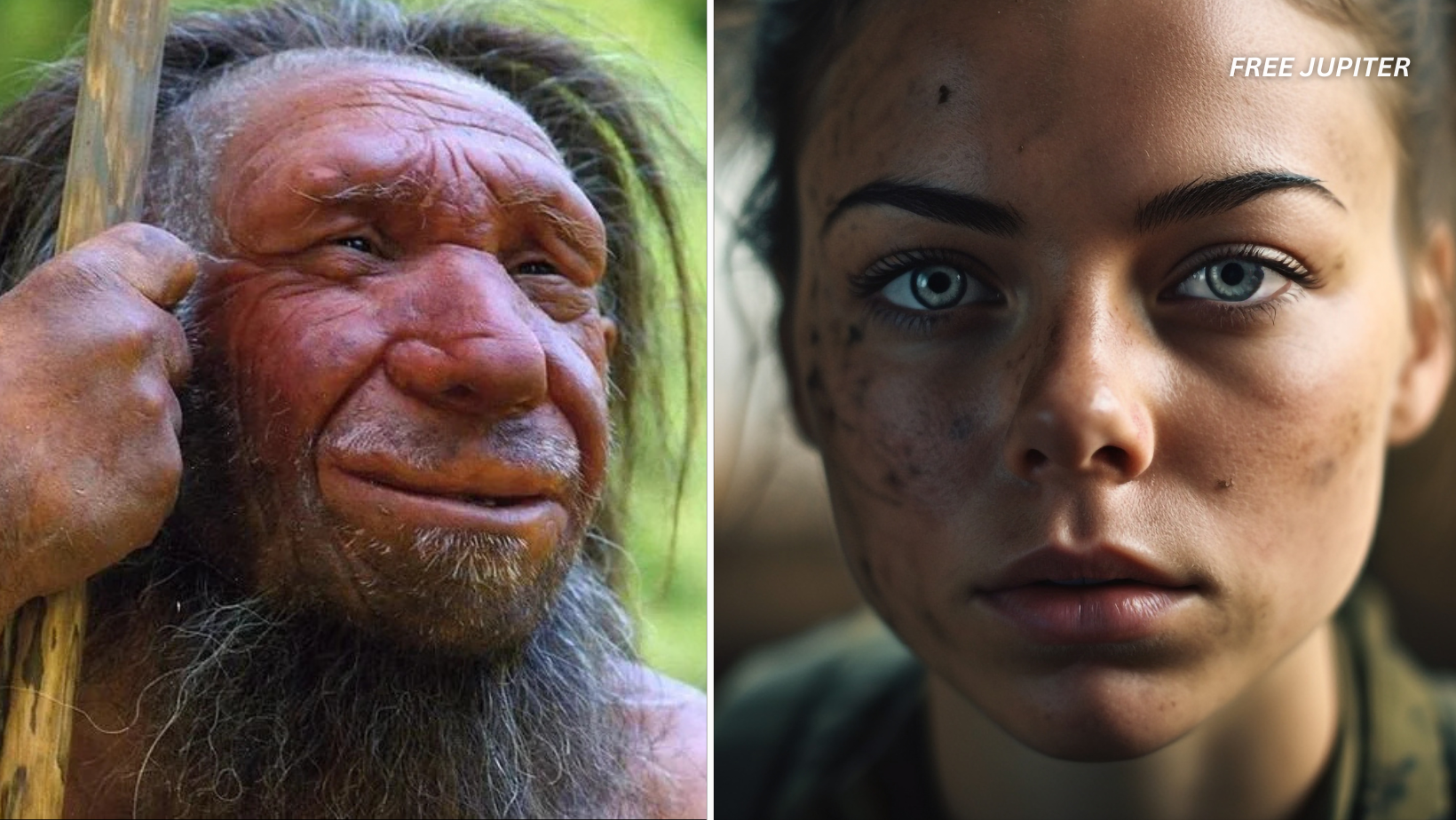Not only do our faces distinguish us from each other, but they are also a biological signature that makes modern humans stand out from our extinct ancestors and even our living primate relatives. When the ancient bones of Neanderthals are examined, one immediately notices their powerful jaws, wide nasal apertures, and prominent facial features that seem to project outward like the rugged edge of a cliff. Chimpanzees, our evolutionary cousins, are marked by facial features built for muscular strength and biting power. In contrast, modern human faces appear comparatively subdued smaller, flatter, and more refined in structure.
A new and intriguing study by scientists from the Max Planck Institute for Evolutionary Anthropology in Germany has revealed an interesting developmental difference that can account for this imbalance. Using sophisticated methods that involve 3D imaging, geometric morphometric analysis, and microscopic inspection of facial bone surfaces, researchers have mapped out how facial characteristics develop from infancy to maturity in humans, Neanderthals, and chimpanzees. What they found indicates that the faces of contemporary humans stop developing much sooner in life than those of our deep and recent primate ancestors.
A Slower Growth Trajectory: The Human Facial Blueprint
The team, led by Alexandra Schuh of the Max Planck Institute, tried to identify the how of the uniqueness of the modern human face. What their data yielded was an elegant answer based not just on evolutionary biology but on developmental timelines as well. While Neanderthals and chimpanzees still undergo massive facial growth well into adolescence, human facial development more or less stops in the teenage years.
“Our results show that a shift in development specifically during late growth phases resulted in reduced faces,” says Schuh. “In contrast to Neanderthals and chimpanzees who continue to grow longer, human facial development ends earlier, during adolescence, and ends with a less extensive adult face“.
This growth stop was most prominent in the midface the region that includes the nose, upper jaw, and surrounding cheekbones. In Neanderthals and chimpanzees, this area continues to expand and bulge forward during later stages of growth. In human beings, though, the midface is more or less set in adolescence, resulting in the flatter, less projecting facial profile characteristic of our species today.
Read more: 7 Surprising Signs That You Have Neanderthal DNA
Mapping Facial Growth: From Infants to Adults Across Species
To reach this conclusion, the researchers compiled a diverse dataset consisting of 128 modern human skulls from different global populations, 33 chimpanzee skulls, and 13 Neanderthal skulls. This dataset contained individuals from infancy to adulthood, enabling a close cross-sectional examination of how facial features change throughout the lifespan in each species.
New scanning methods enabled the researchers to quantify not only the external shape and size of facial bones, but also the microscopic processes occurring on their surfaces. By watching cellular activity related to bone building and bone breakdown the biological “sculpting” that adds or removes bone material the scientists were able to reconstruct how each face had evolved over time.
In Neanderthals and chimpanzees, this process of remodeling continued for much longer than in humans, especially around the nasal cavity and cheekbone areas. These regions continued to grow outward, helping to create the long, heavy, and muscular midface shape typical of both species.
Microscopic Clues: What the Bone Tells Us
One. of the most striking revelations from the study was the observation of bone resorption activity under a microscope. In modern humans, this activity slowed down markedly during adolescence, especially across the face. This deceleration implied a slowing down of the rate at which facial features were being remodeled effectively “locking in” the smaller, more flat structure at an earlier age.
By contrast, skulls of Neanderthals and chimpanzees still displayed clear evidence of furious remodeling activity into later stages of development. Ongoing remodelling permitted their midfaces to protrude and retain the tough, bony appearance that differentiates them from modern humans.
“We discovered that growth slowed extremely earlier in adolescence,” study authors said. “Modern humans revealed less bone resorption on the face, indicating lower cellular activity.”
Gracilization: A Broader Evolutionary Trend Toward Delicacy
The earlier facial slowdown is one element of a larger evolutionary pattern of modern humans referred to as gracilization. This is a term used to describe the general tendency toward thinner, less dense anatomy, and it is something seen not only in the face but throughout the whole skeletal framework. In comparison to previous hominins, modern humans have thinner bones, reduced muscle attachment sites, and lighter overall skeleton mass.
Read more: Earth’s Water Might Not Have Originated From Asteroids After All: Scientists
Simulating Evolution: What If Human Faces Grew Like Neanderthals’?
To deepen their discovery, the researchers conducted extensive computer simulations to simulate what would occur if developmental timetables were reversed between species. What if the face of a Neanderthal newborn developed according to a modern human growth path? Or if the face of a human newborn followed the prolonged growth trend of a Neanderthal?
The outcome was startling. When Neanderthal skulls were reconstructed based on the human growth curve, their adult faces turned out much smaller and flatter — that is, more human. Conversely, when modern human babies were grown based on the Neanderthal timetable, the adult faces that resulted were large, projecting, and extremely thick effectively, Neanderthal.
“Species-specific variation in growth and bone remodeling determine adult morphology in important ways,” the researchers said. These results reinforce the notion that genes are not enough, but rather the timing of gene development that molds the adult shape.
The Sculpting of the Human Face
The history of the human face is one of refined timing and exact coordination. A tiny change in the timing of growth and bone remodeling has had a disproportionate influence on what we appear like today. By stopping facial growth early on and slowing bone resorption during adolescence, the human race has ended up with faces that are less threatening, more expressive, and maybe more attuned to a life with more emphasis on communication and interaction rather than raw power.
As science proceeds, the interface of genetics, environment, and development will continue to share ever more about how our kind came to be. At the present time, however, this is certain: our humble faces bear the mark of an unusual evolutionary history — one forged as much by what halted as by what began.










